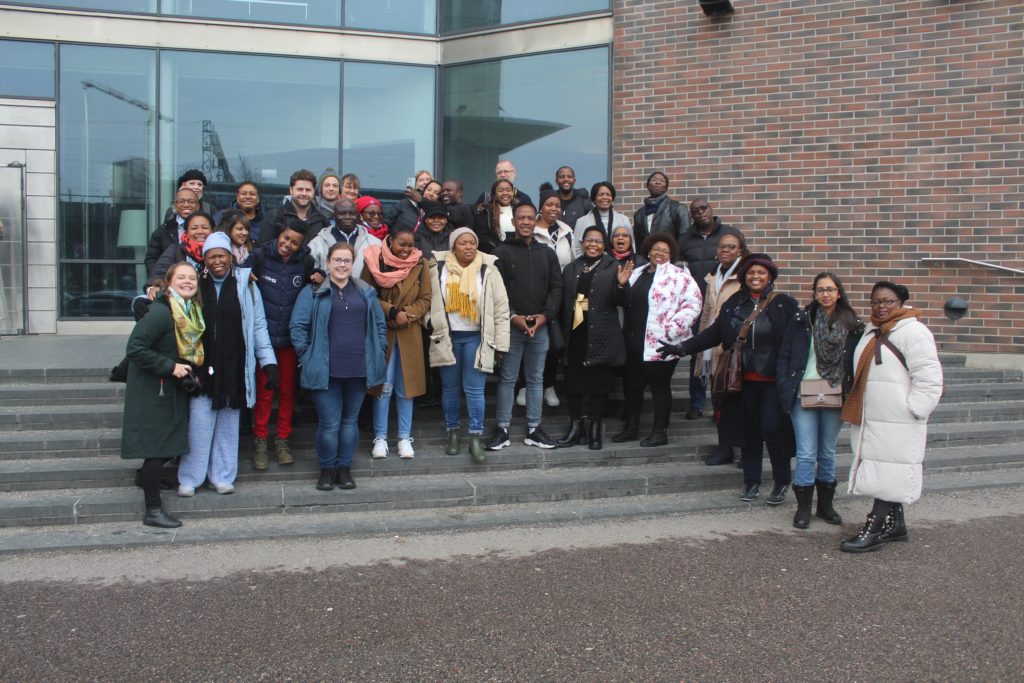At the core of our Erasmus+ SUCSESS project is cooperation between industry and universities as well as cooperation between individuals, faculties and countries.
As we had our final training in Helsinki in the beginning of April 2022, we realized how good it was to finally see each other after two years of pandemic-era online meetings and trainings. Thus, we wanted to explore a little deeper the views around the diverse cooperation in our international project and spoke to participants from all partner universities.

Why we are doing this? (Benefits)
The main difference between online and face-to-face meetings is the collaboration outside the formal events and the spontaneous sharing of ideas. The participants felt that these forms of collaboration are really useful. It is valuable to meet in person during coffee breaks and lunches – something that is difficult to achieve in online meetings. It is also easier to establish more formal cooperation when you know a person in real life.
Collaboration and sharing experiences about new teaching methods was mentioned by many. Peer learning and support were highlighted. South African universities can learn a lot from each other and of how to apply project outcomes to their context. Many lecturers face the same challenges of online teaching that the pandemic has created. They share the need for peer support.
It is easier to ponder new ideas, to get reinforcement for thoughts and to find solutions together. As one participant put it, we can overcome differences by learning from each other.
For the South African universities, it has not been just working with an international partnership, but to work together with other universities from different regions of the country. There are many lessons for the students, too. Each one can have a voice and be a global citizen, even those who have not had a voice before.
What we still need to develop (Challenges)
Throughout the project, there have been challenges with implementing the inquiry learning methods that work well with small student groups in Finland. The use of these methods is not as straightforward, as the South African universities have groups with hundreds of students. The pandemic also made it difficult to implement the new teaching methods as in-person learning was off the table.
South Africans also mentioned that the technology is very different abroad. During lock down some students in South Africa only had access to their phones and not to any other technological tools. Further, the technology purchased by the project was challenging to integrate into learning assignments. These difficulties can be mitigated through coaching, sharing best practices and peer support.
South Africans also experienced that their universities operate in silos. Even faculties within one university do not really cooperate. This makes it difficult to implement some of the methods that require cross-pollination and multi-disciplinary collaboration between different groups of experts from hospitality, financial management, marketing and accounting.
One interviewee mentioned that the EU – as an external actor – is really vital in bringing everyone together and breaking the barriers that are preventing closer cooperation between South African universities. Erasmus projects were seen as enablers of a conversation between universities in South Africa, which might not happen without them.
In the beginning, the planning of the trainings was led by the EU partners. Towards the end the South Africans were more involved. They have started piloting some of the new teaching methods in their courses and there is already more entrepreneurial content, e.g. Design Sprints, with industry involvement in commissions and assessment. This helps to achieve the project overall objectives of increasing the cooperation between South African universities and local industry.
How do we continue? (Opportunities)
Everyone we interviewed, wished to continue cooperation also after the project finishes next year. Working together and learning from each other were seen as valuable and important by all participants. Many appreciated the networking opportunities of international projects, mentioning that getting to know academics from their own country was good, too.
Interviewees were already looking for more ways to collaborate both internally between faculties as well as nationally and internationally. One had already plans for cross-university collaboration for courses and projects. For many, the cooperation so far had been so eye-opening that they wanted to stop functioning in their own bubbles and start cooperation in earnest.
These were priceless revelations from a project that aims at improving collaboration. We feel that in this aspect, our project has succeeded with its mission.
Authors: Annika Konttinen (Haaga-Helia UAS) and Marja Lindholm (University of Oulu)
Picture: www.shutterstock.com